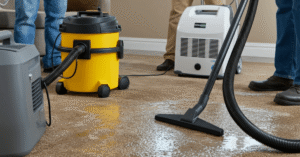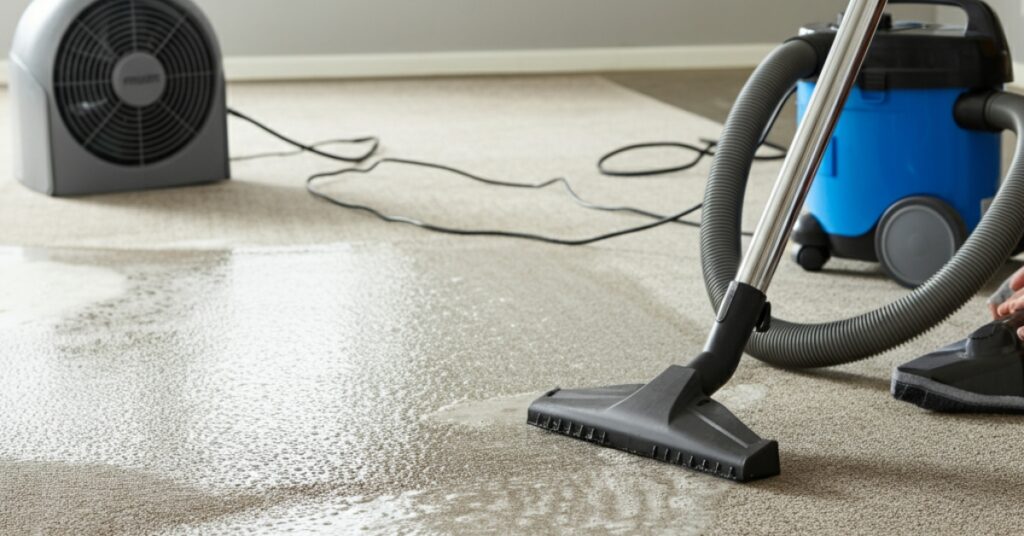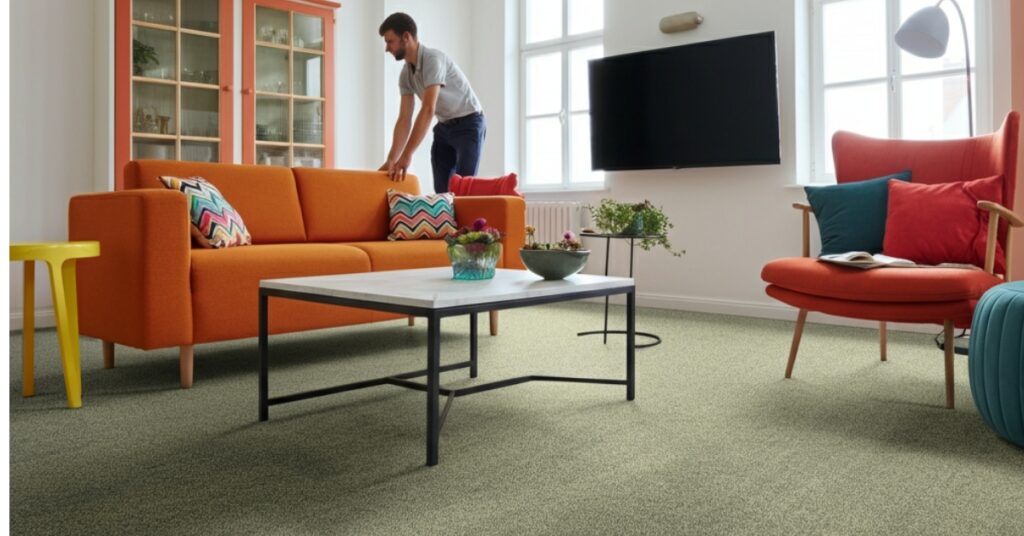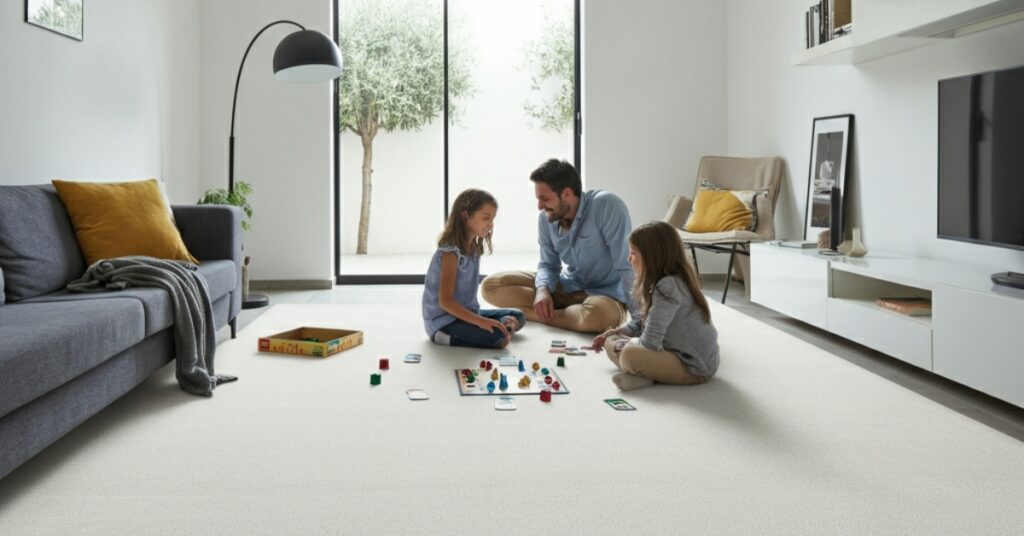As an Amazon Associate, I earn from qualifying purchases.
Waiting for your carpet to dry can feel endless, especially when you need to use that room again. Understanding how long does it take for the carpet to dry helps you plan your day and avoid walking on damp surfaces that could lead to mold or damage.
Carpet drying time depends on several factors including cleaning method, humidity levels, air circulation, and carpet thickness. Most carpets take between 6 to 24 hours to dry completely, though some situations may require up to 48 hours. Professional cleaning typically takes longer to dry than simple spot cleaning, but the results last much longer.
Factors That Affect Carpet Drying Time
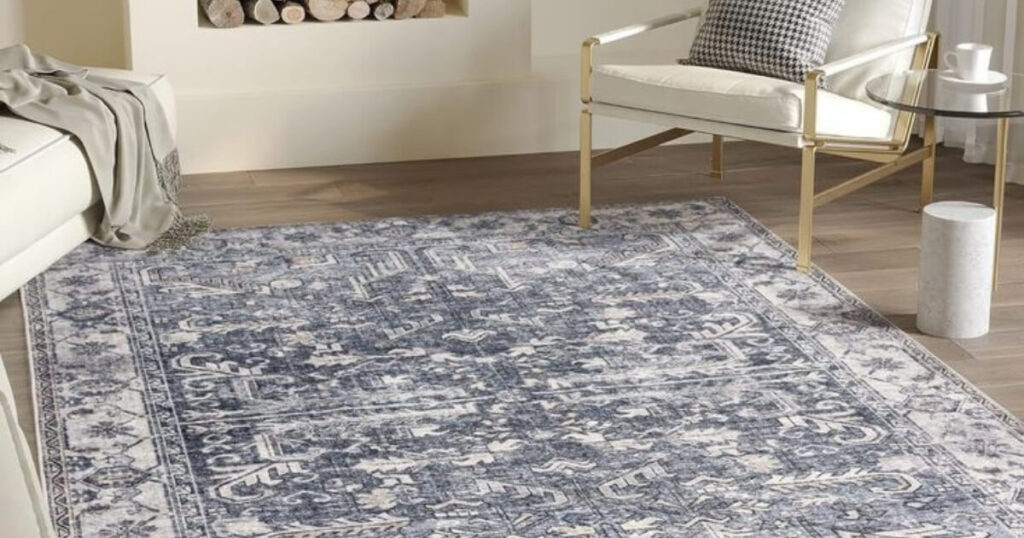
Cleaning Method Used
Steam cleaning and hot water extraction require the longest drying times because these methods saturate carpet fibers with water. Professional steam cleaning typically needs 12 to 24 hours for complete drying. However, this thorough cleaning method removes deep-set dirt and allergens more effectively than surface cleaning.
Dry cleaning methods and encapsulation cleaning use minimal moisture, allowing carpets to dry within 2 to 6 hours. These methods work well for maintenance cleaning but don’t penetrate as deeply into carpet fibers. Additionally, spot cleaning small areas usually dries within 1 to 3 hours depending on the amount of cleaning solution used.
Environmental Conditions
Humidity levels significantly impact how long does it take for the carpet to dry. High humidity slows evaporation, extending drying time by several hours. Conversely, low humidity and dry air help moisture evaporate quickly from carpet fibers.
Temperature also plays a crucial role in drying speed. Warm air holds more moisture than cold air, accelerating the drying process. However, extremely high temperatures can damage carpet fibers or backing materials, so maintain reasonable indoor temperatures during the drying period.
Air Circulation and Ventilation
Good air circulation dramatically reduces carpet drying time. Open windows, use fans, and run your HVAC system to promote air movement across wet carpet surfaces. Moving air carries moisture away from carpets more efficiently than stagnant air.
Ceiling fans work particularly well for carpet drying because they create consistent air movement across large areas. Furthermore, dehumidifiers remove excess moisture from the air, creating better conditions for faster carpet drying throughout your home.
Different Carpet Types and Their Drying Times
Synthetic Carpets
Nylon, polyester, and polypropylene carpets typically dry faster than natural fiber carpets. These synthetic materials don’t absorb as much water during cleaning, reducing overall drying time. Most synthetic carpets dry completely within 6 to 12 hours under normal conditions.
Synthetic carpets also resist moisture retention better than natural fibers. This characteristic helps prevent mold and mildew growth during the drying period. Additionally, synthetic materials maintain their shape and texture better when wet, reducing the risk of permanent damage from extended moisture exposure.
Natural Fiber Carpets
Wool and other natural fiber carpets require longer drying times because these materials absorb more water during cleaning. Natural fiber carpets often need 12 to 24 hours for complete drying, sometimes extending to 48 hours in humid conditions.
Natural fibers are more susceptible to damage from prolonged moisture exposure. Therefore, proper ventilation and air circulation become even more critical when drying wool or cotton carpets. Moreover, natural fiber carpets may shrink or develop texture changes if not dried properly.
Carpet Thickness and Density
Thick, plush carpets hold more water and take longer to dry than thin, low-pile carpets. Dense carpet construction traps moisture between fibers, extending drying time significantly. Berber and loop pile carpets often dry faster than cut pile carpets due to their construction.
Heavy carpet padding also affects drying time. Thick padding absorbs cleaning solutions and water, creating a moisture reservoir under your carpet. This trapped moisture can extend total drying time and increase the risk of mold growth if ventilation is inadequate.
Professional Cleaning vs. DIY Drying Times
Professional Steam Cleaning
Professional carpet cleaning typically requires 12 to 24 hours for complete drying. Professionals use powerful extraction equipment that removes more water during cleaning, but they also apply more cleaning solution initially. The thorough cleaning process saturates carpets more completely than DIY methods.
However, professional equipment removes more water during the extraction phase, which can actually reduce overall drying time compared to DIY steam cleaning. Professional cleaners also provide guidance on ventilation and drying techniques to optimize how long does it take for the carpet to dry.
DIY Cleaning Methods
Home carpet cleaning machines generally require 6 to 18 hours for drying, depending on the equipment quality and technique used. Rental machines often lack the powerful extraction capabilities of professional equipment, potentially leaving more water in carpets.
DIY spot cleaning usually dries within 2 to 6 hours because you’re treating smaller areas with less cleaning solution. However, over-wetting during DIY cleaning can extend drying times significantly and increase the risk of carpet damage or mold growth.
Carpet Shampooing
Traditional carpet shampooing creates more foam and uses more water than modern cleaning methods. Shampooed carpets typically need 18 to 36 hours for complete drying. The foam residue can trap moisture in carpet fibers, slowing the evaporation process.
Modern low-moisture shampooing systems reduce drying time to 6 to 12 hours. These systems use less water while still providing effective cleaning results. Furthermore, encapsulation shampoos crystallize dirt and moisture, making removal easier and reducing drying time.
Tips to Speed Up Carpet Drying
Improve Air Circulation
Position fans strategically around cleaned areas to create cross-ventilation and air movement. Place fans at different heights to circulate air above and across the carpet surface. Box fans work well for large rooms, while smaller fans can target specific problem areas.
Open windows on opposite sides of the room to create natural air flow when weather permits. However, avoid opening windows during humid weather, as this can actually slow the drying process by introducing more moisture into your home environment.
Control Indoor Climate
Set your thermostat slightly higher than normal to warm the air and increase its moisture-holding capacity. Warm air accelerates evaporation, reducing how long does it take for the carpet to dry. However, avoid extreme temperatures that could damage carpet fibers or adhesives.
Run your air conditioning system to remove humidity from indoor air. Lower humidity levels help moisture evaporate from carpets more quickly. Additionally, close off the cleaned room from the rest of your home to concentrate dehumidification efforts in the affected area.
Use Dehumidifiers
Place dehumidifiers in rooms with wet carpets to actively remove moisture from the air. This equipment works especially well in basements or rooms with poor natural ventilation. Choose dehumidifiers with appropriate capacity for your room size.
Empty dehumidifier water tanks regularly during the drying process to maintain optimal performance. Some units feature automatic shut-off when tanks are full, but regular monitoring ensures continuous operation throughout the carpet drying period.
Signs Your Carpet Is Completely Dry
Physical Testing Methods
Press a clean, dry towel firmly against the carpet surface in several locations. If the towel remains completely dry after pressing, your carpet has likely finished drying. However, test multiple areas because some sections may dry faster than others.
Check carpet edges along walls and furniture where air circulation might be limited. These areas often retain moisture longer than open floor areas. Additionally, lift carpet edges slightly to check the backing material, which should feel dry to the touch when drying is complete.
Visual and Sensory Indicators
Properly dried carpets return to their original color and texture. Wet or damp carpets often appear darker and feel different underfoot. When your carpet looks and feels normal again, drying is usually complete.
Musty odors indicate trapped moisture and incomplete drying. Fresh, clean-smelling carpets suggest successful drying and proper cleaning. Moreover, carpets should feel comfortable to walk on barefoot without any sensation of dampness or coolness from residual moisture.
What Happens If Carpet Doesn’t Dry Properly
Mold and Mildew Growth
Carpets that remain damp for more than 24 to 48 hours risk developing mold and mildew. These organisms thrive in moist environments and can cause health problems for sensitive individuals. Mold growth often appears as dark spots or patches on carpet surfaces.
Mildew creates musty odors that persist even after the carpet feels dry. Once mold or mildew establishes in carpet fibers, professional remediation or carpet replacement may be necessary. Therefore, ensuring proper drying prevents these costly and unhealthy problems.
Carpet Damage and Odors
Extended moisture exposure can cause carpet backing to separate or degrade. This damage affects carpet appearance, durability, and performance. Additionally, some carpet adhesives may fail when exposed to excessive moisture for extended periods.
Trapped moisture can create permanent odors in carpet that regular cleaning cannot eliminate. These smells often worsen over time as bacteria and other microorganisms grow in the damp environment. Prevention through proper drying remains the best solution for avoiding these problems.
Frequently Asked Questions
1. Can I walk on carpet while it’s drying?
Avoid walking on wet carpets when possible. If you must walk on damp carpet, wear clean socks or shoe covers to prevent dirt transfer and carpet damage.
2. How long does it take for carpet to dry after water damage?
Water damage requires professional extraction and typically needs 24 to 72 hours for complete drying, depending on the extent of water penetration.
3. Is it normal for carpet to smell while drying?
Mild cleaning solution odors are normal, but musty or sour smells indicate potential mold growth or inadequate cleaning. Improve ventilation if odors develop.
4. Can I use a hair dryer to speed up carpet drying?
Hair dryers work for small spots but aren’t practical for large areas. Focus on improving overall air circulation instead for better results.
5. What temperature is best for carpet drying?
Maintain indoor temperatures between 70-80°F for optimal drying conditions. Higher temperatures may damage carpet fibers or adhesives.
6. How do I know if my carpet padding is dry?
Lift carpet edges to check padding moisture levels. Damp padding feels cool and may appear darker than normal dry padding.
7. Can wet carpet cause floor damage underneath?
Yes, prolonged carpet moisture can damage hardwood floors or cause subfloor problems. Ensure complete drying to prevent structural issues.
8. Should I turn off my HVAC system while carpet dries?
Keep your HVAC system running to promote air circulation and humidity control. This helps carpets dry faster and more completely.
Final Verdict
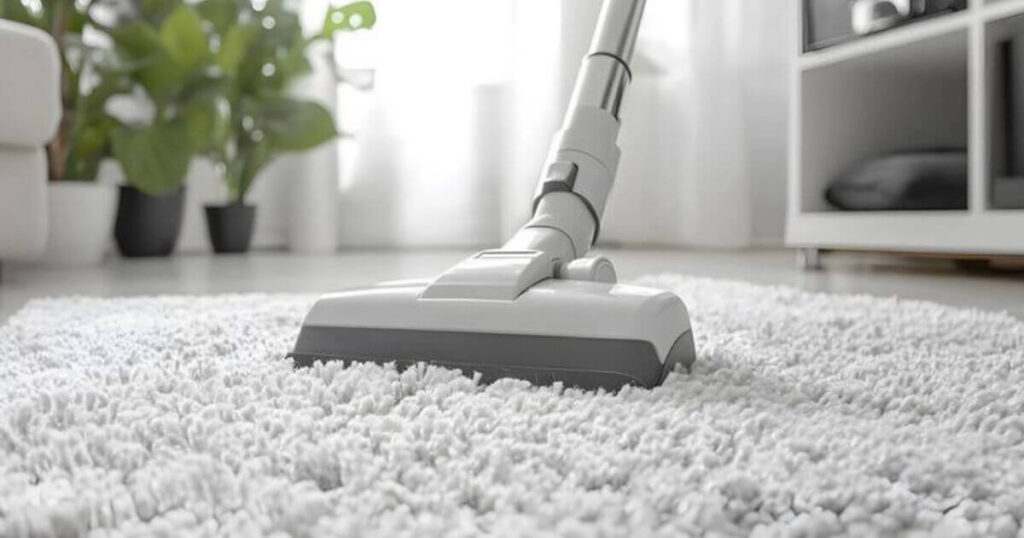
Understanding how long does it take for the carpet to dry helps you plan cleaning projects and maintain healthy indoor environments. Most carpets dry within 6 to 24 hours under proper conditions, but factors like cleaning method, humidity, and carpet type significantly impact drying time.
Proper ventilation, air circulation, and climate control accelerate the drying process while preventing mold and damage. When in doubt, allow extra drying time rather than risk walking on damp carpets or experiencing moisture-related problems. Professional carpet cleaners can provide specific guidance for your situation and ensure optimal results for your investment.
As an Amazon Associate, I earn from qualifying purchases.

